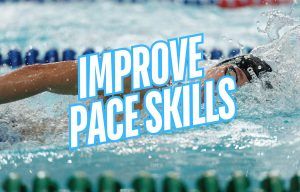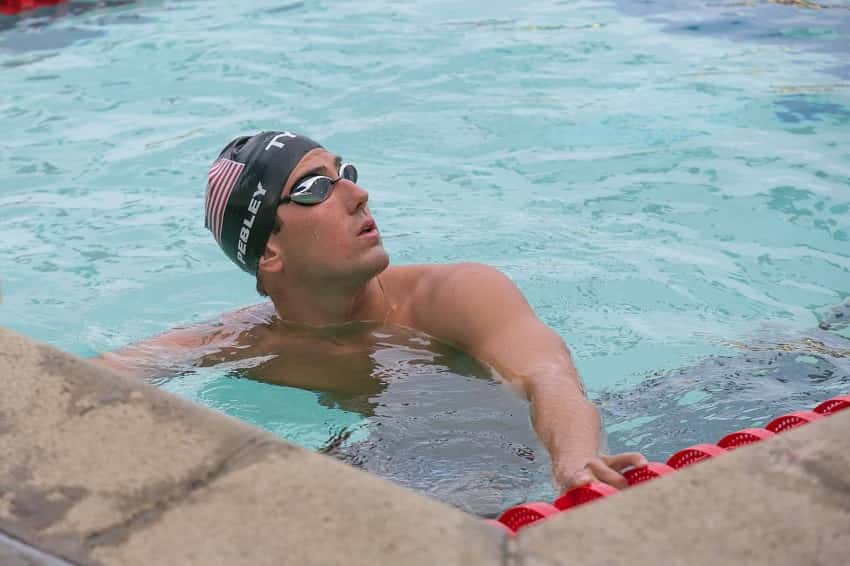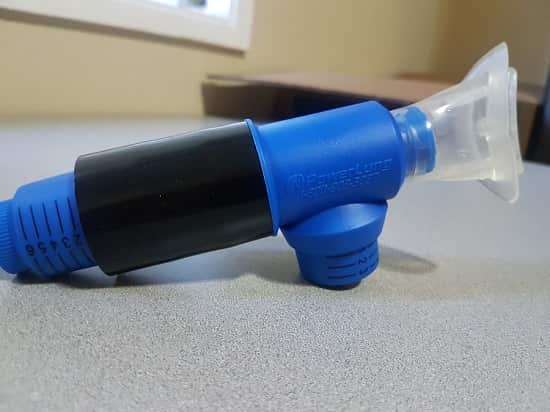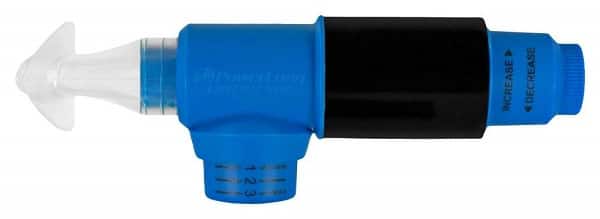
How to Improve Your Pacing Skills
Looking to up your pacing skills in the pool? Here are some actionable pacing tips and tools to help you master pace and your performance on race day.

Tired of being out of breath while swimming? Here are some breathing exercises for swimmers that will help you manage your breathing and swim faster.
Swimmers pay a lot of attention to conditioning and technique while going up and around the black line.
There’s a lot to focus on while trying to improve in the water, from proper hand placement, hip rotation, mobility, to trying your best to push through those hard sets and swim practices.
On top of all that, swimmers face a unique problem in the water: we have to time our breaths to work within our breathing patterns, our underwater dolphin kicks, off the start, and so on.
We’ve all experienced the harried sensation of being low on breath during a hard set or during the end of our race. We resort to breathing in and out of the walls, we start breathing every stroke, and instead of focusing on our race strategy and using breathing as a weapon, we scramble for that precious oxygen.
Fortunately, there are some things you can do in training to help improve your breath control. Here are my three favorite exercises for better breathing and swimming:
I won’t lie, I’ve always loathed doing hypoxic sets in the water. Whenever coach wrote up a set that included breathing patterns I always resisted.
The struggle of feeling low on oxygen is simply uncomfortable.
But there’s no doubt that being more disciplined with your breathing patterns helps you realize that you can focus more on when and how much you breathe.
Over the last couple decades the underwater dolphin kick has become the unofficial fifth stroke of swimming.
In the short course pool there’s an opportunity to swim up to 60% of your races completely underwater, and athletes like Caeleb Dressel, Misty Hyman, Michael Phelps and Tom Shields have shown how effective those underwaters can be at the highest levels.
Being a great underwater dolphin kicker requires that you not only have mastered the technique and conditioning required to do it efficiently, but you also need to be able to hold your breath while doing it. (This creates another problem—juggling distance off the walls with accumulated oxygen debt and declining performance.)
Another simple way to improve your ability to breathe while swimming is to do one extra dolphin kick off each of your walls. Seems like a tiny thing, but as with the breathing patterns, extended underwaters will teach you to manage your breathing and of course, you will also improve your dolphin kick along the way.
This is my favorite exercise for better breathing for swimmers because it’s something you can easily measure, it doesn’t require a pool to perform, and you will see the improvement from it almost immediately.
It’s using a respiratory training device.
The premise of these devices is hilariously simple: it’s weight training for your breathing muscles. They are made of a plastic tube, a mouth-piece to inhale and exhale, and dials to crank up the resistance and your ability to take in and expel air increase.
One study with swimmers found that six weeks of training with a respiratory training device was enough to improve 100m sprint times by 1.7%. That’s a staggering improvement when you consider the minimal amount of time involved. (The swimmers did 3×30 repetitions on the device daily to achieve these results.)

Having used one of these devices myself (you can read a full breakdown of my experience with a PowerLung device here) I can attest to the improvements in ability to suck down oxygen and overall lung capacity (I can hold my breath more comfortably for longer). Just a few minutes a day inhaling and exhaling into the device made a significant difference on my ability to breathe in the water.
While expensive (mine was well over $100 with shipping and taxes from Amazon) they are effective. The best part is that there’s no breath-holding required, you don’t need to be in the water to use it, and it’s super portable and can be used on off-days or when you’re sitting at the computer writing a blog article.


We all know the joys of progression in the water. It’s no different when it comes to improving your ability to breathe while swimming–those moments where a breathing pattern becomes easier, or your breakouts grow a little longer, or you realize that you aren’t sucking wind as hard as usual after an all-out rep are fun to experience.
Give these exercises to improve your breathing and start using air as a weapon for faster swimming in the pool.

Olivier Poirier-Leroy Olivier Poirier-Leroy is the founder of YourSwimLog.com. He is an author, former national level swimmer, two-time Olympic Trials qualifier, and swim coach.
✅ Free shipping on Orders over $49
✅ Price Match Guarantee
✅ Best selection of gear for training and competition
✅ Fast and Easy Returns

“This is the best book I have ever seen concerning mental training.” — Ray Benecki, Head Coach, The FISH Swim Team


Looking to up your pacing skills in the pool? Here are some actionable pacing tips and tools to help you master pace and your performance on race day.

Looking for tips on how to use a drag chute for improved swim performances? Read on for some proven tips, sets, and pointers for training with a chute.

Ready to take your swimming to the next level? Here are seven ways that a drag chute can help you become a better and faster swimmer.

Wondering if a swim bench can help improve your swimming? Here are six benefits of swim benches for better technique, more power, and faster swimming.

Not breathing into the walls is one of the fundamental skills developing swimmers are taught. Here is how powerful a no-breath approach is for turn and swim speed. Strong training habits are something swimmers hear a lot about from their earliest days of their competitive swimming careers. The greatest hits

Drills with a swim snorkel are one of the best ways to maximize engagement and skill development. Here are five swim snorkel drills to try for faster swimming.
SITE
SHOP
GUIDES

LANE 6 PUBLISHING LLC © 2012-2025
Join 33,000+ swimmers and swim coaches learning what it takes to swim faster.
Technique tips, training research, mental training skills, and lessons and advice from the best swimmers and coaches on the planet.
No Spam, Ever. Unsubscribe anytime.
